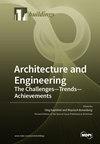双金属钢棒低循环疲劳寿命的迁移学习预测模型
IF 3.1
3区 工程技术
Q2 CONSTRUCTION & BUILDING TECHNOLOGY
引用次数: 0
摘要
预测双金属钢棒(BSB)的低循环疲劳寿命对于促进双金属钢棒的工程应用至关重要。然而,有关双金属钢棒低循环疲劳性能的研究十分有限,而且疲劳实验耗时较长。此外,考虑到模型训练需要足够的数据,数据的缺乏阻碍了典型的数据驱动型机器学习的发挥,而机器学习在疲劳寿命预测中得到了广泛应用。为解决这一问题,我们提出了一种迁移学习框架,以利用有限的数据准确预测 BSB 的低循环疲劳寿命。为实现这一目标,收集了从 BSB 低循环疲劳试验中获得的 54 个数据点和其他金属棒的 264 个数据点。首先利用收集到的源数据集构建了基于人工神经网络(ANN)的源模型。然后,将源模型中存储的学习知识转移到转移模型中。之后,对转移模型进行进一步微调,然后使用 BSB 目标数据集进行测试。ANN 模型的结构与转移模型相同,但只使用目标数据集进行训练,没有转移源模型的深度特征,因此被设定为基线模型。与基线模型相比,所构建的转移模型可用于准确预测 BSB 的疲劳寿命。此外,通过比较单层和双层转移模型,研究了人工神经网络的隐藏层对准确性的影响。此外,还通过特征分析评估了关键参数对金属棒疲劳寿命的影响。本文章由计算机程序翻译,如有差异,请以英文原文为准。
Transfer-Learning Prediction Model for Low-Cycle Fatigue Life of Bimetallic Steel Bars
The prediction of the low-cycle fatigue life of bimetallic steel bars (BSBs) is essential to promote the engineering application of BSBs. However, research on the low-cycle fatigue properties of BSB is limited, and fatigue experiments are time-consuming. Moreover, considering that sufficient data are needed for model training, the lack of data hinders the leverage of typical data-driven machine learning, which is widely used in fatigue life prediction. To address this issue, a transfer learning framework was suggested to accurately predict the low-cycle fatigue life of BSBs with limited data. To achieve this goal, 54 data points obtained from low-cycle fatigue tests on BSBs and 264 data points of other metallic bars were collected. Source models based on artificial neural networks (ANNs) were first constructed using the collected source dataset. Then, the learned knowledge stored in the source models was transferred to the transfer models. After that, transfer models were further fine-tuned and then tested using the target dataset of BSBs. The ANN models, which were of the same structure as the transfer models but only trained with the target dataset without transferring deep features from the source models, were set as baseline models. Compared with baseline models, the constructed transfer models could be used to accurately predict the fatigue life of BSBs. Moreover, the influence of hidden layers of ANNs on accuracy was examined by comparing one-layer and two-layer transfer models. Furthermore, the influence of key parameters on fatigue life of metallic bars was evaluated by feature analysis.
求助全文
通过发布文献求助,成功后即可免费获取论文全文。
去求助
来源期刊

Buildings
Multiple-
CiteScore
3.40
自引率
26.30%
发文量
1883
审稿时长
11 weeks
期刊介绍:
BUILDINGS content is primarily staff-written and submitted information is evaluated by the editors for its value to the audience. Such information may be used in articles with appropriate attribution to the source. The editorial staff considers information on the following topics: -Issues directed at building owners and facility managers in North America -Issues relevant to existing buildings, including retrofits, maintenance and modernization -Solution-based content, such as tips and tricks -New construction but only with an eye to issues involving maintenance and operation We generally do not review the following topics because these are not relevant to our readers: -Information on the residential market with the exception of multifamily buildings -International news unrelated to the North American market -Real estate market updates or construction updates
 求助内容:
求助内容: 应助结果提醒方式:
应助结果提醒方式:


